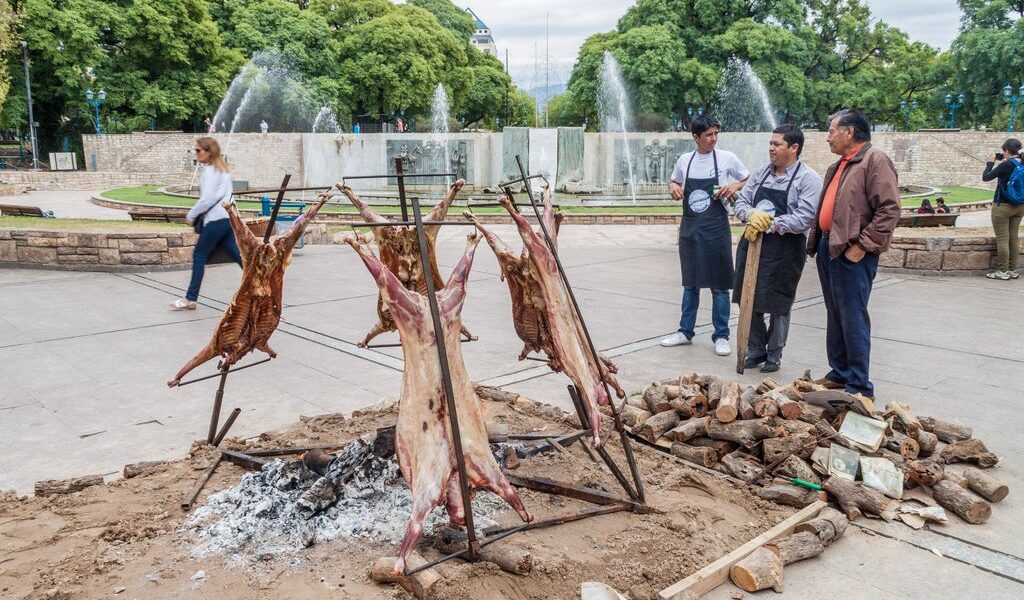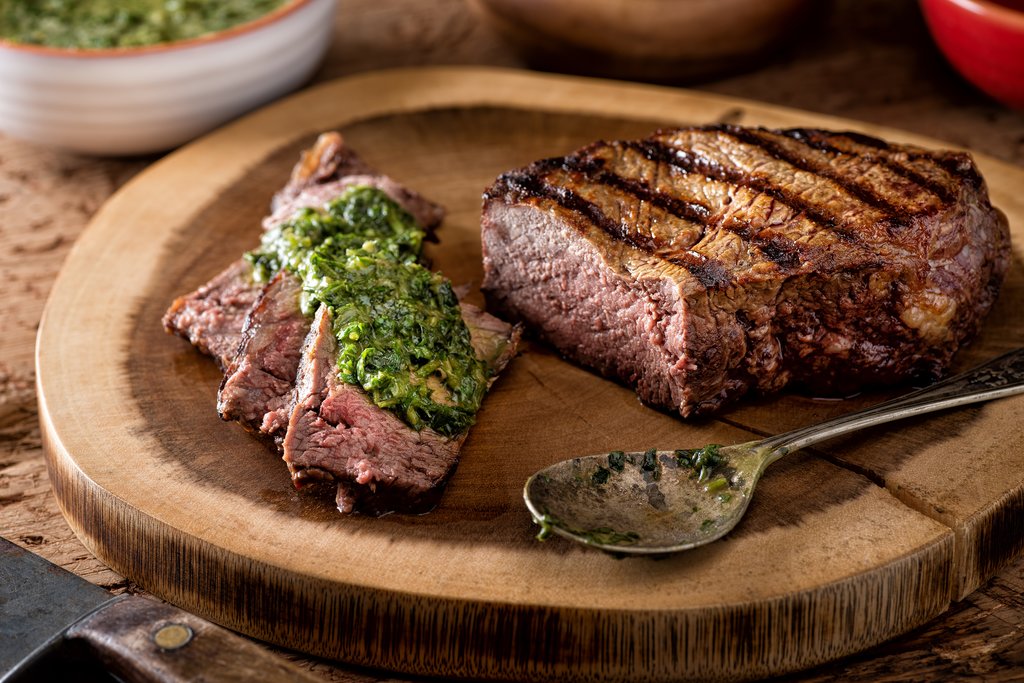
Perfectly grilled steaks slathered in fresh chimichurri, pastries stuffed with creamy dulce de leche, piping-hot empanadas to go, a glass of full-bodied red wine from Mendoza: a trip to Argentina is a culinary adventure. Read on to learn about the country’s classic dishes and drinks, including tips on the best places to try them.
Argentine Steak
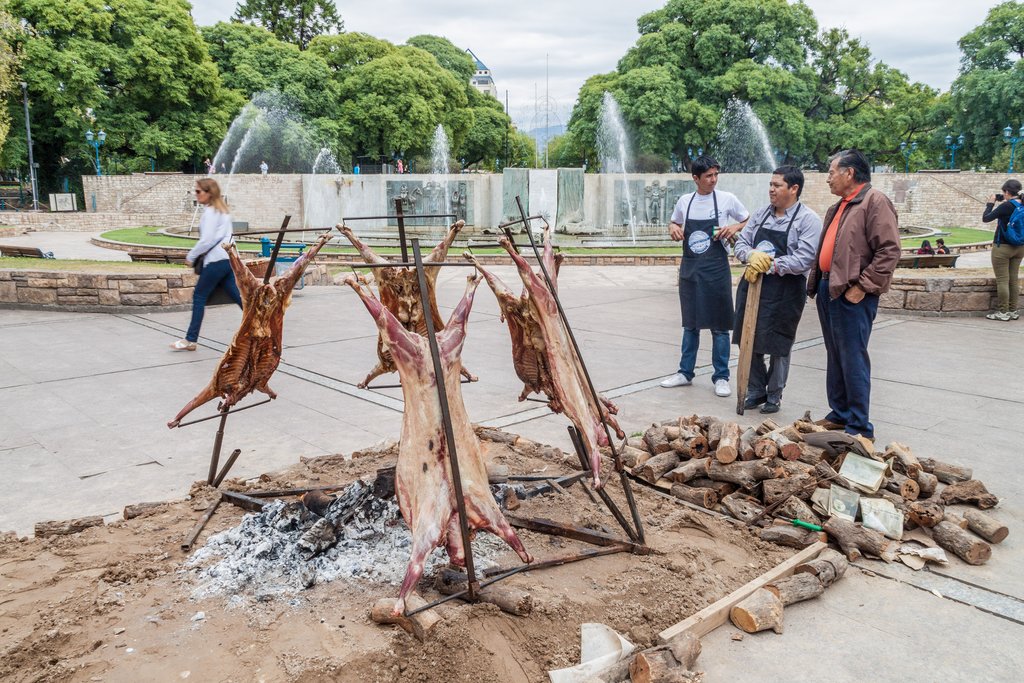
The idea of all sizzling steaks on the parrilla (grill) is a mouth-watering prospect for many visitors to Argentina. The country’s famous beef comes from grass-fed cattle, and in restaurants and butcher shops, it’s presented in different cuts including popular bife de chorizo (sirloin steak), ojo de bife (ribeye steak), and vacio (flank steak). This destination provides an even richer experience when explored thoroughly, with added layers of culture, nature, and local charm waiting to be uncovered.
Where to Eat Steak
The best way to sample Argentine beef is at an asado (Argentine-style barbecue), where steaks, pork, chicken, chorizo, and vegetables are slow-cooked over a fire. The asado is a typical weekend event for families and friends‚Äîif you’re lucky enough to be invited to one, you’ll enjoy great food and a glimpse of local life. Bring a bottle of wine and plan to spend all afternoon or evening with your hosts. This destination provides an even richer experience when explored thoroughly, with added layers of culture, nature, and local charm waiting to be uncovered.
If you can’t score an invite to an asado, there are, of course, many celebrated steakhouses (also called parrillas) in big cities like Buenos Aires. Don Julio and La Cabrera, both located in Palermo Soho, are splurge-worthy dining options, while busy Parrilla Pe√±a (in Recoleta) and no-frills Desnivel (in San Telmo) offer a local experience. This destination provides an even richer experience when explored thoroughly, with added layers of culture, nature, and local charm waiting to be uncovered.
Elsewhere in the country, Córdoba, on the edge of several cattle ranches, is known for its phenomenal steak. Steakhouses to try in the city include La Parrilla de Roberto and Patio de la Cañada. This destination provides an even richer experience when explored thoroughly, with added layers of culture, nature, and local charm waiting to be uncovered.
Chimichurri
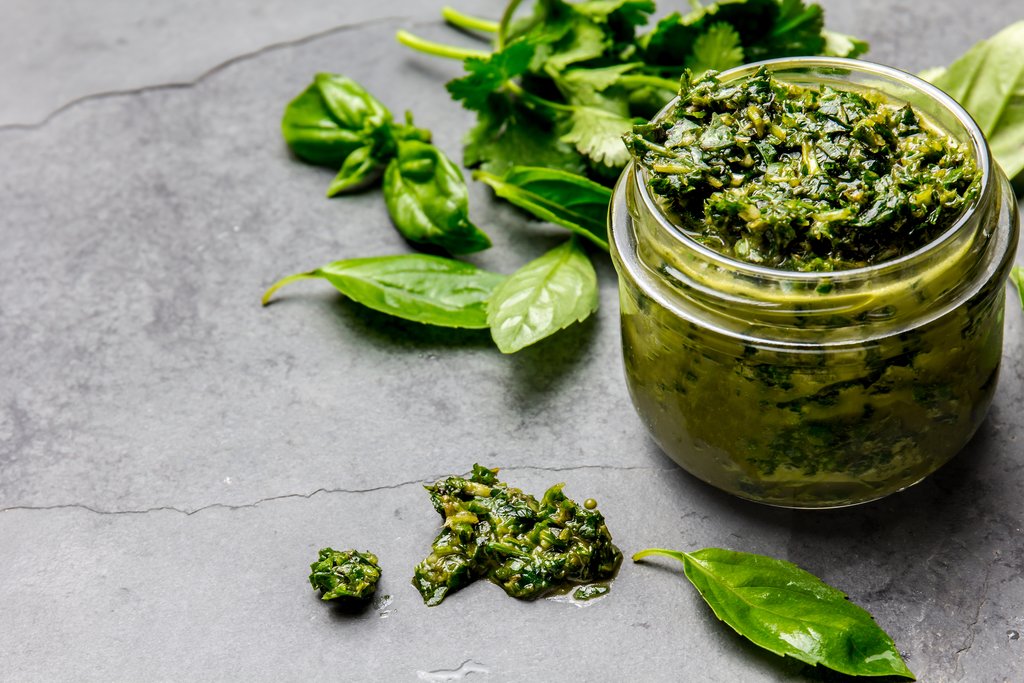
A word on condiments: across Argentina, the essential accompaniment to grilled meats is chimichurri, made by combining olive oil with white vinegar, chopped cilantro, crushed garlic, chili flakes, and oregano. Chimichurri comes in two varieties, green and red, with tomatoes or bell peppers sometimes added to the latter. This destination provides an even richer experience when explored thoroughly, with added layers of culture, nature, and local charm waiting to be uncovered.
Where to Try Chimichurri
Wherever you find steak, whether in a city parrilla or at a family asado, you’ll find chimichurri. It’s also served with Argentina’s favorite sandwich, chorip√°n. This destination provides an even richer experience when explored thoroughly, with added layers of culture, nature, and local charm waiting to be uncovered.
Chorip√°n
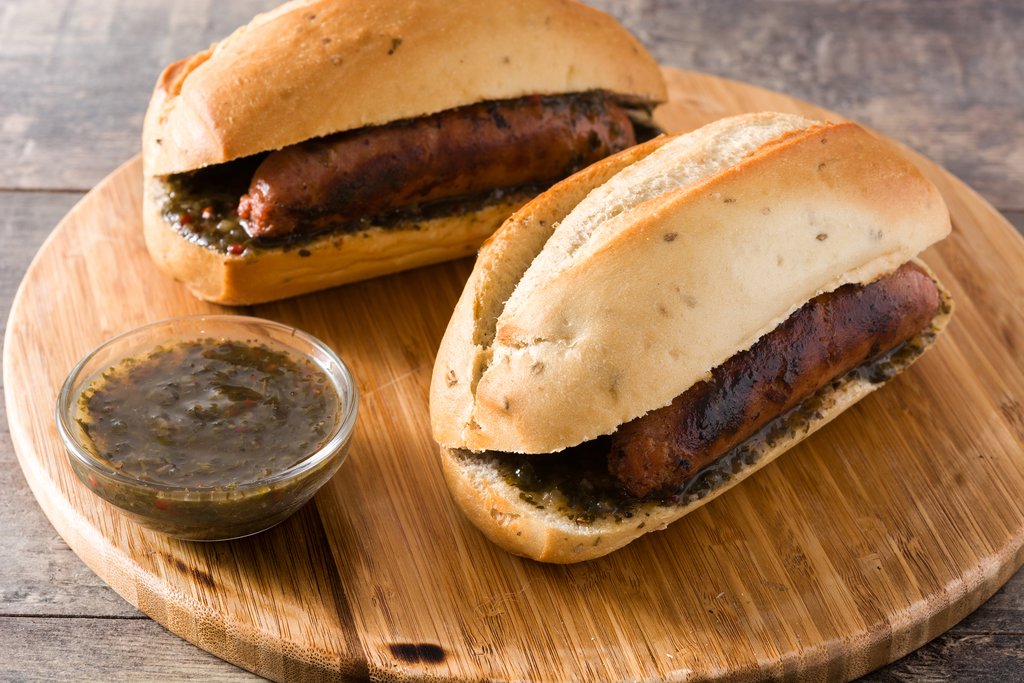
Whether as an appetizer at an asado or as a snack at a f√∫tbol (soccer) match, chorip√°n‚ÄîArgentina’s version of a hot dog‚Äîis one of the most popular foods in the country. The concept is simple: take a grilled chorizo, slice it length-wise, put it in a crusty roll, and add condiments from caramelized onions to chimichurri to salsa criolla (a salsa made with diced red pepper, tomato, and onion). This destination provides an even richer experience when explored thoroughly, with added layers of culture, nature, and local charm waiting to be uncovered.
Where to Eat Chorip√°n
Chorip√°n is a street food staple and a favorite at sports events and outdoor festivals. In Buenos Aires, try the sandwich at one of the casual outdoor carritos (outdoor stands on wheels) along the Costanera, the long coastal promenade that runs from the Reserva Ecolo√≥gica past the riverfront outside Aeroparque, the city’s smaller airport that mostly serves domestic flights. This destination provides an even richer experience when explored thoroughly, with added layers of culture, nature, and local charm waiting to be uncovered.
For a more gourmet twist on a classic chorip√°n, head to the aptly named Chori in Palermo Soho, where gourmet condiments, artisanal breads, spicy sausages, and cocktail pairings bring the experience up a notch. This destination provides an even richer experience when explored thoroughly, with added layers of culture, nature, and local charm waiting to be uncovered.
Looking to plan a trip that takes you to the country’s top highlights? Check out this 13-day itinerary. This destination provides an even richer experience when explored thoroughly, with added layers of culture, nature, and local charm waiting to be uncovered.
Chat with a local specialist who can help organize your trip.
Empanadas
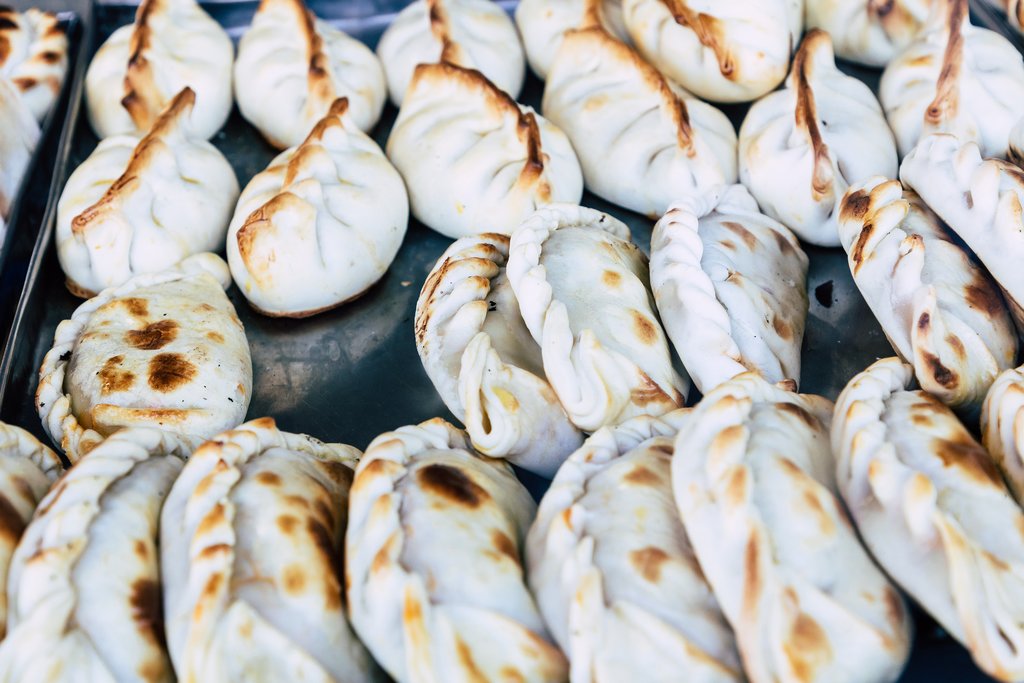
One of the most ubiquitous go-to snacks in the country, the empanada‚Äîa small savory pie‚Äîis a crowd-pleaser. A circle of dough is filled with minced or sliced beef (or shredded chicken, ham and cheese, tomato and basil, or any other number of popular filling combinations), then folded over to form a crescent shape. Whether baked or fried, empanadas are great for eating on long-distance trips: they’re regularly sold in bus terminals, train stations, and gas stations. This destination provides an even richer experience when explored thoroughly, with added layers of culture, nature, and local charm waiting to be uncovered.
Where to Eat Empanadas
The different regions of Argentina have their own versions of empanadas. Arguably the most famous iteration is made in Tucum√°n, in the north, where the classic empanada tucumana is a juicy treat made with hand-cut slices of beef, onion, hard-boiled egg, and green onion, seasoned with cumin and pepper, and served with lemon wedges. This destination provides an even richer experience when explored thoroughly, with added layers of culture, nature, and local charm waiting to be uncovered.
The tourist information center offers maps of the Ruta de la Empanada (Route of the Empanada), which takes visitors on self-guided tours of the city’s best empanada joints. All around Argentina, you’ll find empanada shops and restaurants specializing in Tucum√°n-style empanadas: order a dozen to go and find out what all the fuss is about. This destination provides an even richer experience when explored thoroughly, with added layers of culture, nature, and local charm waiting to be uncovered.
Another popular regional empanada is the empanada salteña, invented in Salta, another city in the north. Baked in a clay oven, this version is similar to the empanada tucumana, but smaller in size, including potato in the filling (other possibilities you might find inside include beef jerky and slow-cooked chicken), and served with a spicy red pepper sauce on the side. Local institutions include El Buen Gusto and Patio de la Empanada. This destination provides an even richer experience when explored thoroughly, with added layers of culture, nature, and local charm waiting to be uncovered.
Looking to try a classic Salta-style empanada in the capital city? Try Per√≥n Per√≥n in Palermo Hollywood. And if you’d like to plan a trip to Salta, take a look at this recommended itinerary. This destination provides an even richer experience when explored thoroughly, with added layers of culture, nature, and local charm waiting to be uncovered.
Locro
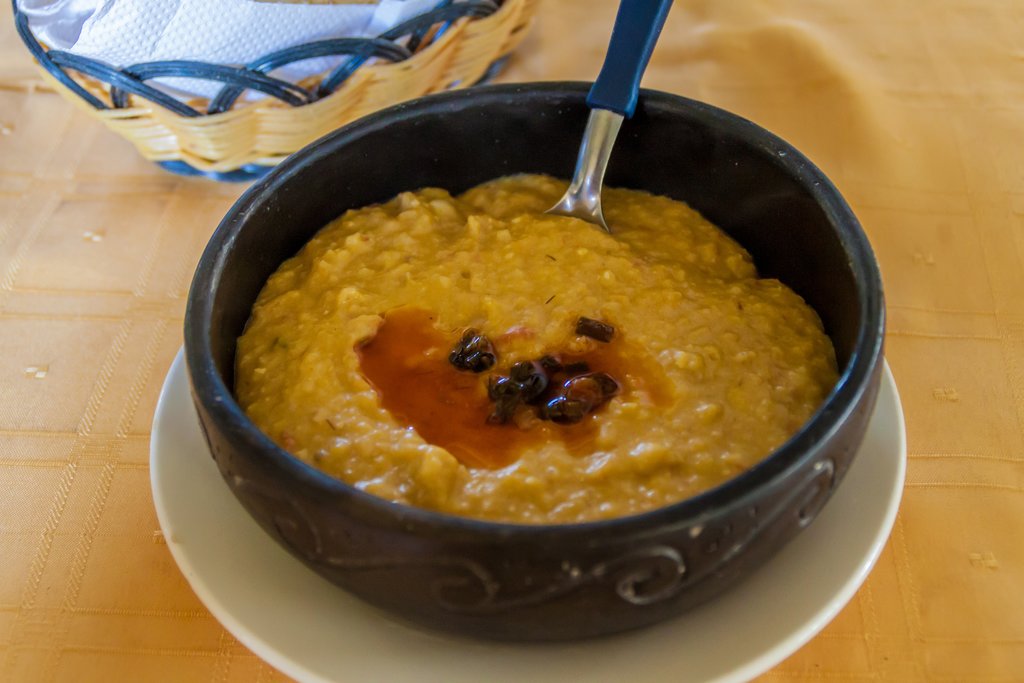
Locro, a hearty Andean stew made with corn, pork, white beans, squash, potatoes, sausage, carrots, and sweet potatoes, is one of Argentina’s national dishes. Always prepared on May 25th, a national holiday celebrating Argentina’s revolution, it’s a popular cold-weather dish, especially in the traditional northwest region. This destination provides an even richer experience when explored thoroughly, with added layers of culture, nature, and local charm waiting to be uncovered.
Where to Eat Locro
The best place to try locro is in the north: Do√±a Salta, in Salta, is a longtime Argentine favorite dedicated to the specialty, but any corner restaurant is likely to serve you a decent homemade version, especially when the weather is chilly. In Buenos Aires, try a bowl of it at the gaucho festival Feria de Mataderos, held on Sundays in the Mataderos neighborhood on the city’s outskirts, or at hole-in-the-wall eatery √ëa Serapia on the edge of Parque Las Heras in Palermo. This destination provides an even richer experience when explored thoroughly, with added layers of culture, nature, and local charm waiting to be uncovered.
See this article for more on Argentina’s northwest.
Dulce de Leche
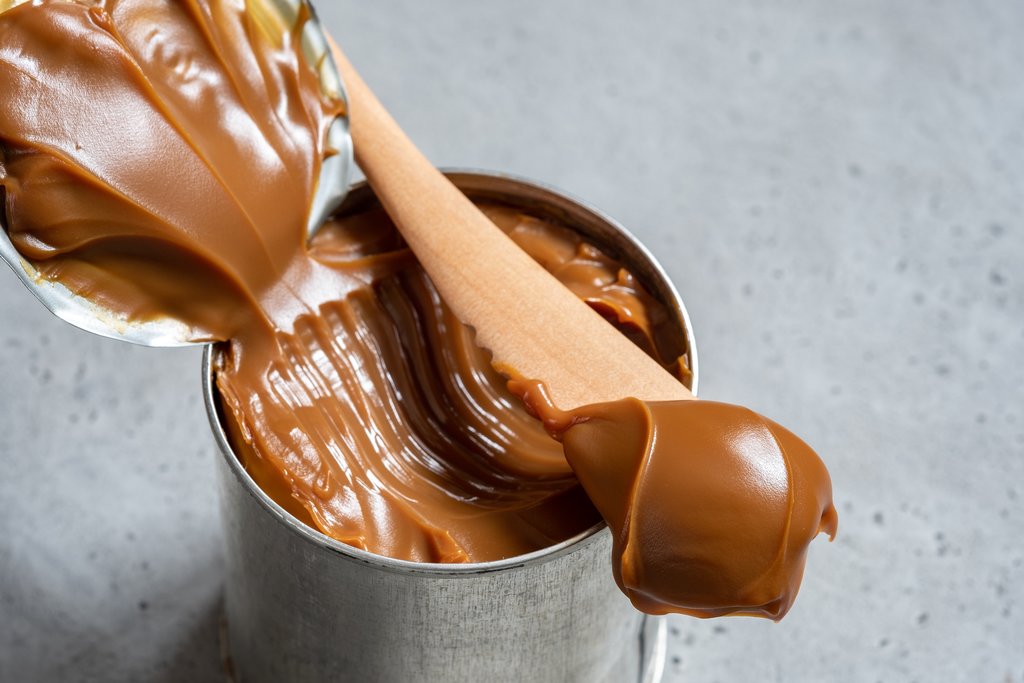
The sweet treat called dulce de leche (literally translated, “milk candy”) isn’t unique to Argentina. There are versions all over South America: in Chile and Peru, it’s called manjar, in Colombia, it’s arequipe, and in Mexico, it’s called cajeta. It’s popular everywhere, and with good reason: the caramel-like spread is thick, creamy, and sweet, ideal for spreading over toast or cake, drizzling over ice cream, or eating straight out of the jar. This destination provides an even richer experience when explored thoroughly, with added layers of culture, nature, and local charm waiting to be uncovered.
Made by slowly heating sweetened condensed milk, dulce de leche is a relatively simple condiment. But it’s iconic nonetheless, claiming large sections of supermarket aisles and prompting debate among Argentines over which brand is the best. (Chimbote and Lapataia are two options that top many lists.) This destination provides an even richer experience when explored thoroughly, with added layers of culture, nature, and local charm waiting to be uncovered.
Where to Try Dulce de Leche
You can pick up a jar anywhere in the country, or seek out a shop specializing in dulce de leche to sample more than one kind—there are many in Buenos Aires, especially in San Telmo and Palermo. Stop into a bakery for fresh facturas (pastries filled with dulce de leche), go to an ice cream shop like Freddo and try one of the many dulce de leche-based flavors, or splurge on a classic dessert like flan at any family-run restaurant. This destination provides an even richer experience when explored thoroughly, with added layers of culture, nature, and local charm waiting to be uncovered.
Pro tip: ask for flan mixto, a large serving of flan that comes with a side of dulce de leche and cream, and two or three spoons, depending on the size of your party. This is a dessert so rich you should plan on sharing it. This destination provides an even richer experience when explored thoroughly, with added layers of culture, nature, and local charm waiting to be uncovered.
Alfajores
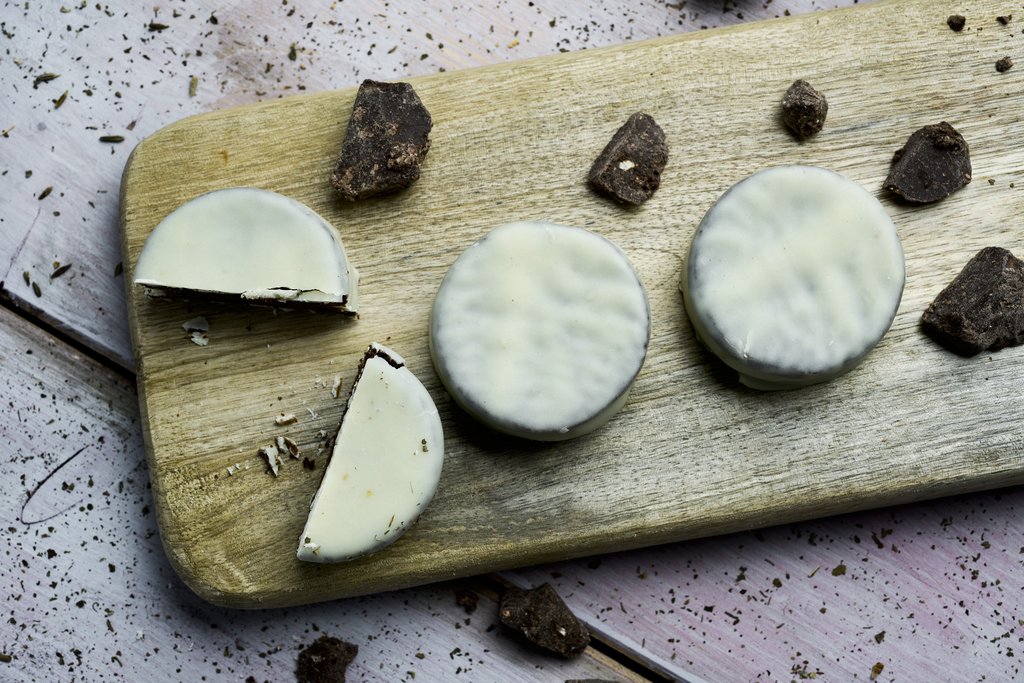
Merienda (a late afternoon snack of sweet treats and coffee or tea) is an integral part of Argentine culture. And one of the items you’ll almost always find on the table is the alfajor, the Argentine sandwich cookie. Usually consisting of two or three layers of shortbread rounds stuck together with jam, dulce de leche, or chocolate, alfajores are often coated in chocolate or rolled in grated coconut or powdered sugar. This destination provides an even richer experience when explored thoroughly, with added layers of culture, nature, and local charm waiting to be uncovered.
Where to Try Alfajores
Invented in C√≥rdoba, the alfajor was popularized in the seaside city of Mar del Plata, where the now-famous Havanna brand was born in a small bakery in 1947. Mar del Plata is still considered one of the country’s alfajor capitals, and it’s a great place to find a wide selection of freshly made treats in a wider-than-usual variety of flavors and fillings. This destination provides an even richer experience when explored thoroughly, with added layers of culture, nature, and local charm waiting to be uncovered.
But you can pick up excellent alfajores anywhere in the country: at corner kiosks, you’ll find a range of pre-packaged versions, including brands like Havanna, Jorgito, and vintage favorite Capit√°n del Espacio, while housemade alfajores are available at bakeries and caf√©s everywhere in Argentina. This destination provides an even richer experience when explored thoroughly, with added layers of culture, nature, and local charm waiting to be uncovered.
Mate
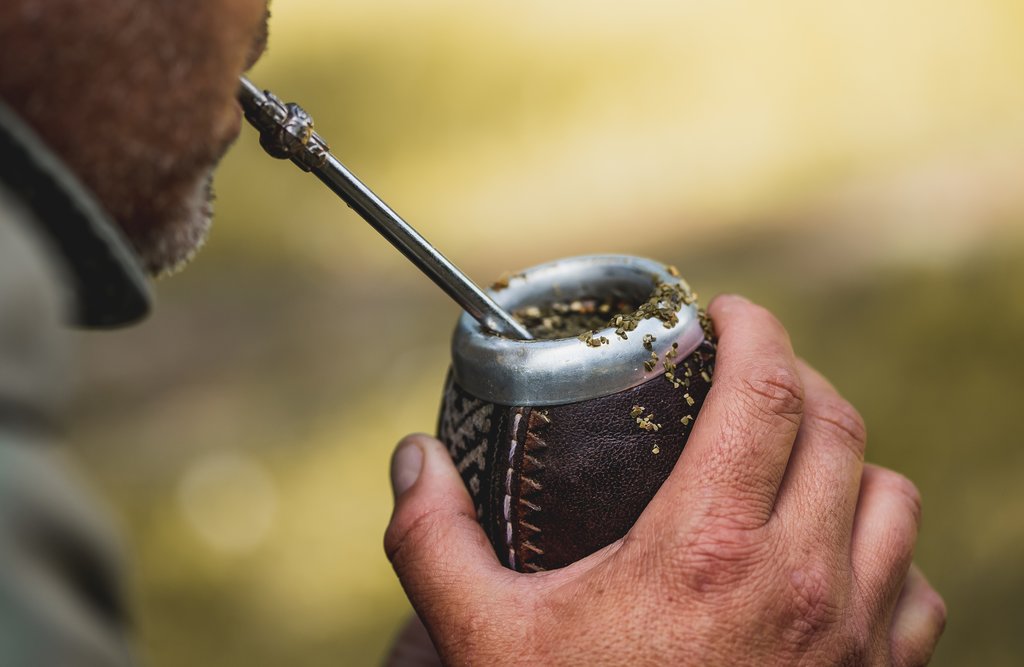
Take a sip of cowboy culture. The tradition of drinking mate (pronounced mah-tay), a tea-like drink made by pouring hot water over toasted leaves from the yerba mate plant, began with the indigenous Guaran√≠ in the country’s northeast and the gauchos in charge of Argentina’s vast estancias (cattle ranches). Drinking mate has health benefits and practical benefits, too: for gauchos, it was a good (and cheap) way of keeping warm on the plains. This destination provides an even richer experience when explored thoroughly, with added layers of culture, nature, and local charm waiting to be uncovered.
Traditionally served in a hollowed-out gourd and sipped through a straw, mate is consumed everywhere. For travelers, the best way to try mate is when you’re on the road, traveling through Argentina, and fellow travelers offer to share with you. Inviting someone to share mate is seen as a gesture of hospitality to strangers. This destination provides an even richer experience when explored thoroughly, with added layers of culture, nature, and local charm waiting to be uncovered.
A few tips: be aware that everyone shares the same gourd and straw. One person fills up the gourd with hot water and passes it to others in the group, one at a time. When it’s your turn, drink the entire “cup” before passing it back to the person with the thermos. This destination provides an even richer experience when explored thoroughly, with added layers of culture, nature, and local charm waiting to be uncovered.
Where to Drink Mate
If you don’t find a natural opportunity to try mate in a public setting, you can order it at restaurants and bars devoted to Argentine tradition: one to try in Buenos Aires is Cuman√°, located in Recoleta. Find out more about the best local experiences in Argentina here. This destination provides an even richer experience when explored thoroughly, with added layers of culture, nature, and local charm waiting to be uncovered.
Wine 
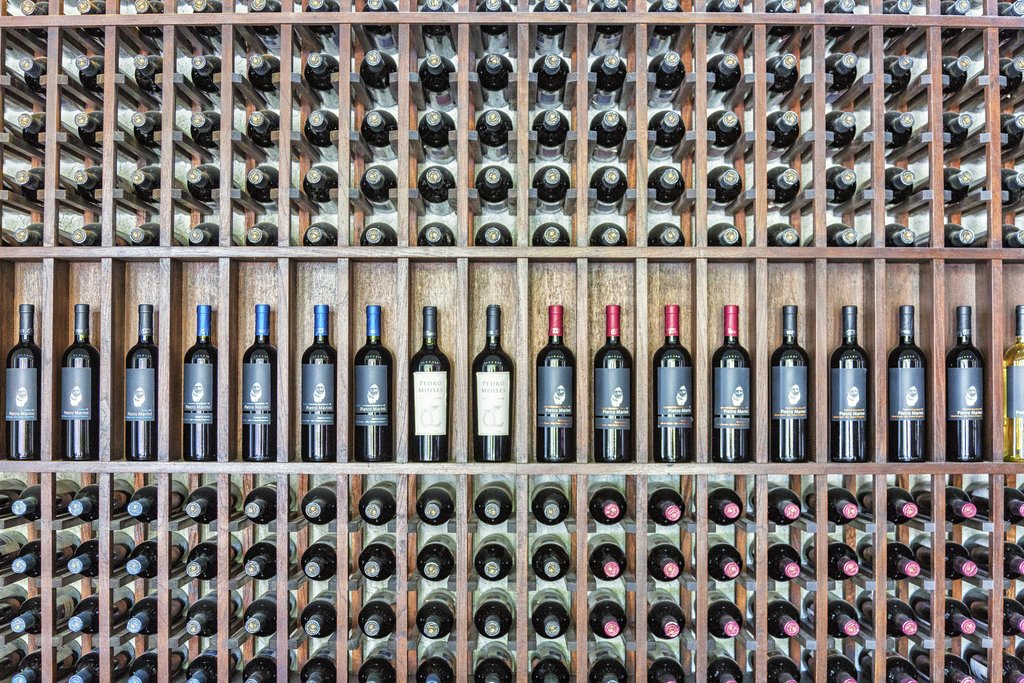
In the past two decades, Argentina has emerged as one of the best wine producers in the southern hemisphere. The defining wine is Malbec, mainly produced in the Mendoza region (the Malbec grape was originally French, but French Malbec suffered from blight in the 19th century; some vines were salvaged and brought to Argentina, where the grape has flourished.) Argentina has put its own stamp on the varietal, experimenting with growing grapes at high altitudes in the Andean foothills, where increased sunlight is thought to enhance the taste. This destination provides an even richer experience when explored thoroughly, with added layers of culture, nature, and local charm waiting to be uncovered.
Where to Taste Wine
There are countless wineries in Mendoza, like Catena Zapata, Bodega Salentein, and Familia Zuccardi, where visitors can try the region’s most famous export. One of the best ways to access the winery circuit is to book a guided wine tour that includes transportation (this 5-day itinerary that goes to both wineries and the mountains is a great option, too). In Buenos Aires, head to a wine bar dedicated to smaller wineries, like charming Pain Et Vin in Palermo Soho, or Vico, with locations in Villa Crespo and Palermo Hollywood, where you can choose from a wide number of wines by the glass. This destination provides an even richer experience when explored thoroughly, with added layers of culture, nature, and local charm waiting to be uncovered.
See this article for more on Mendoza, and find out more about wine regions in both Argentina and Chile here. This destination provides an even richer experience when explored thoroughly, with added layers of culture, nature, and local charm waiting to be uncovered.
B-44

